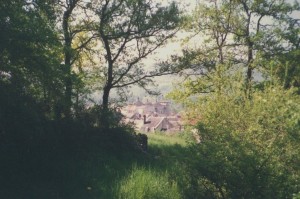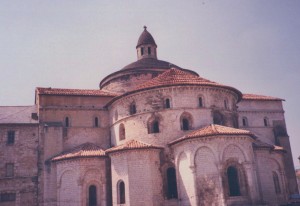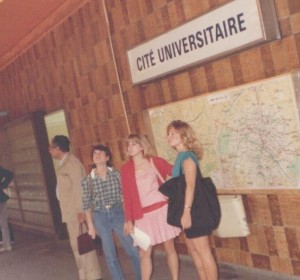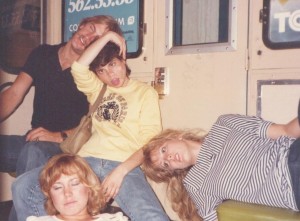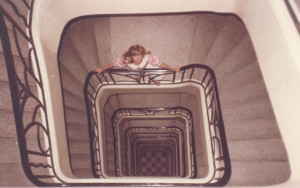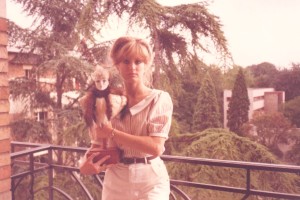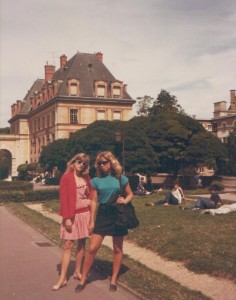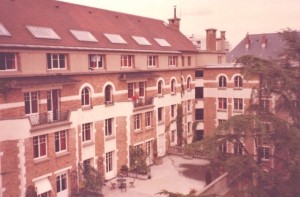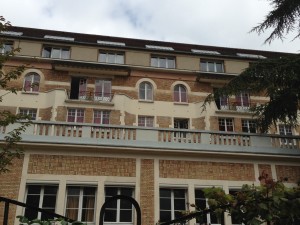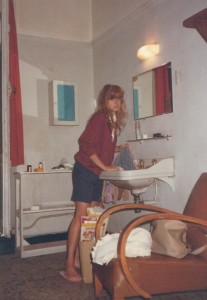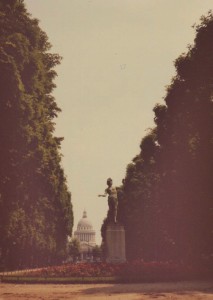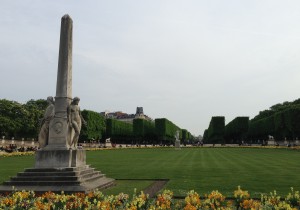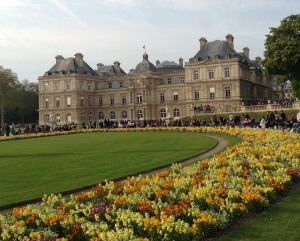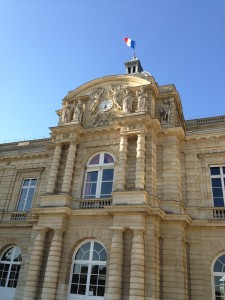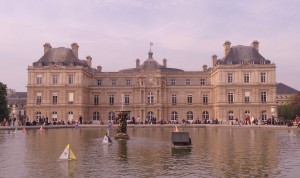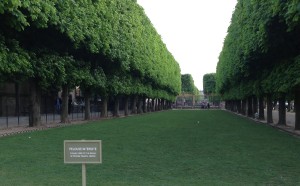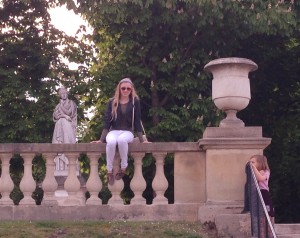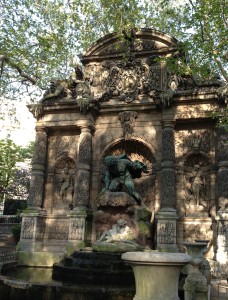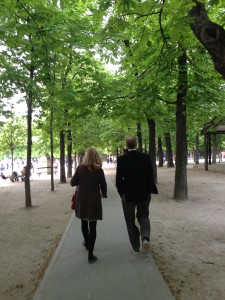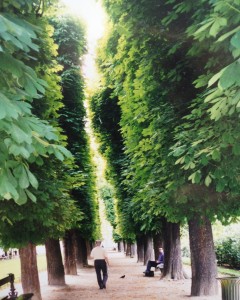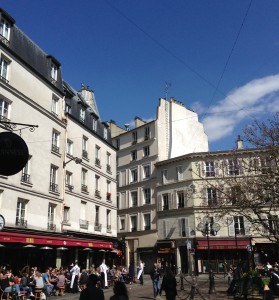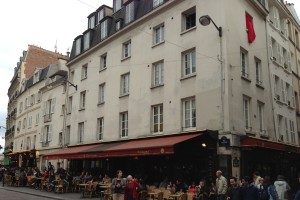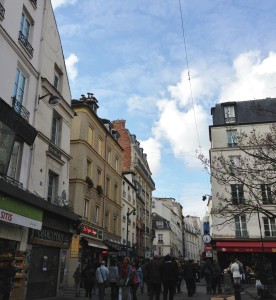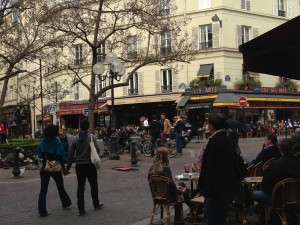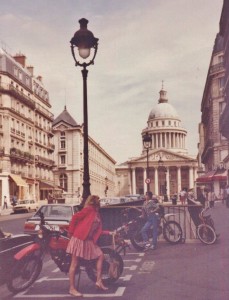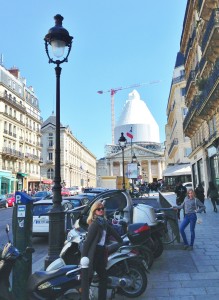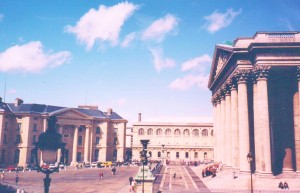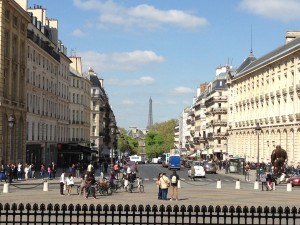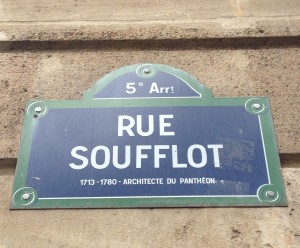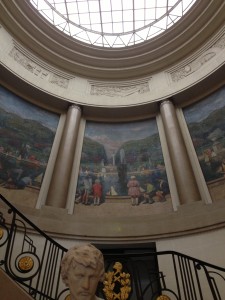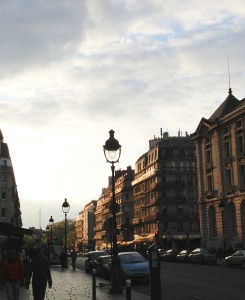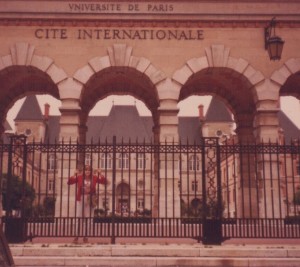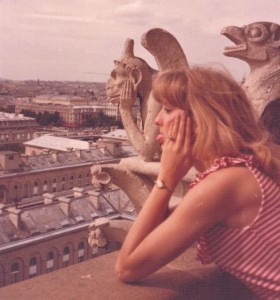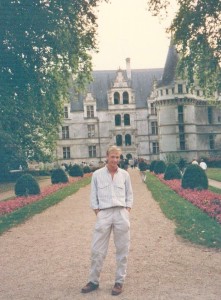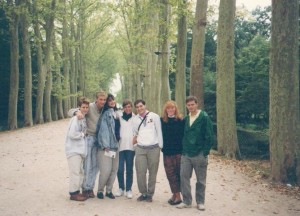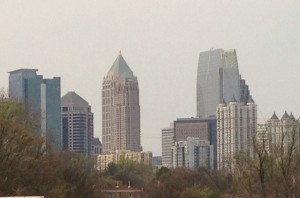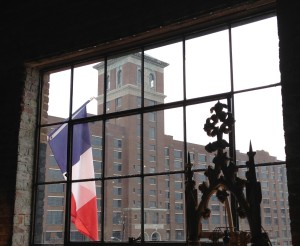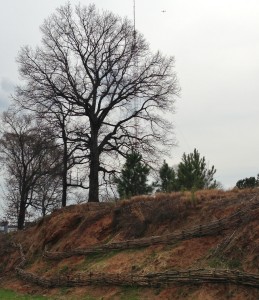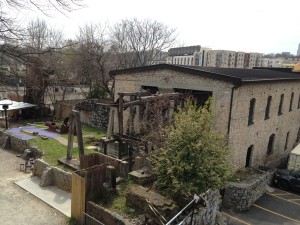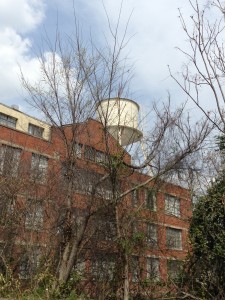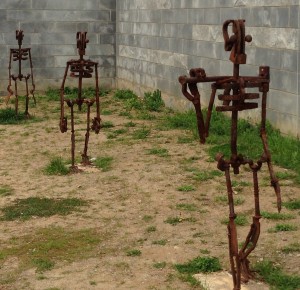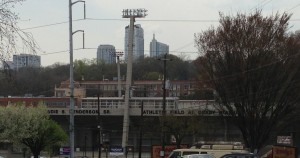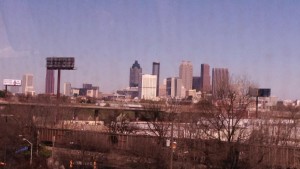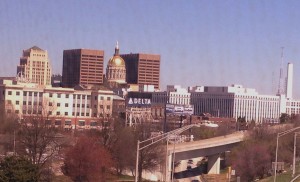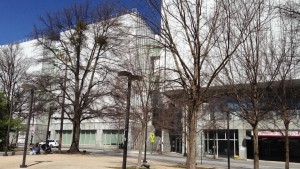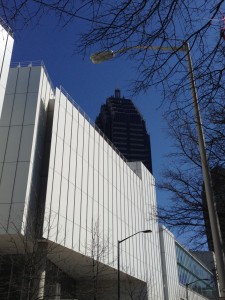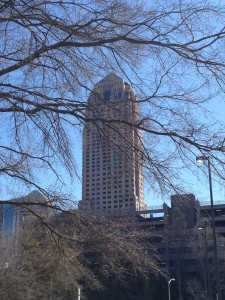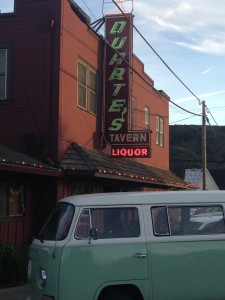That day at the Fondation des Etats-Unis, looking up at the balcony of my former room, the life layers continued to flip by. I can see myself back in Paris as a grad student. I’m spending this year primarily in London, researching my dissertation in medieval art. It’s April of 1989, and my friend Laura had joined me in London. Together, we had made our way to the south coast and crossed the Channel.
It’s seven years since my summer in Paris. It surprises me, but I feel considerably more mature. Maybe it’s Laura’s companionship; perhaps her air of confident capability is wearing off on me. The stamp on my forehead that once read CLUELESS AMERICAN COLLEGE GIRL!! has evidently worn away. The throngs of loitering young men check us out but generally don’t pursue us. Shopkeepers treat us with respect. Some even call us Madame. Although this last point strikes me as overkill, otherwise I thank my lucky stars for the perks of aging. Paris is a familiar, gracious presence, and it’s good to be back.
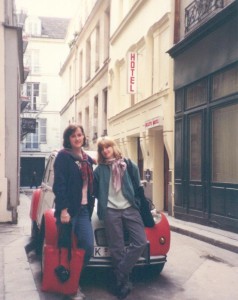
We find a cheap hotel just off the Fontaine Saint-Michel, in the midst of what I think of as the old neighborhood, the Latin Quarter. The hotel is pretty awful, but it’s certainly affordable, the location is great, and its oddities are the source of many laughs. It’s not worth our time and trouble to trudge the streets in search of a new place, so we stay put for five days or so.
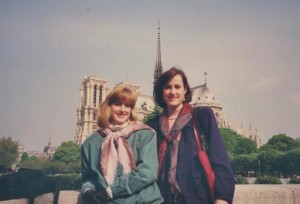
When Laura flies back to the states, I’m joined by a friend from England. I have an Apocalypse manuscript to examine in the city library of Toulouse, so we head south. It bothers me that I have no recollection of how we got there. We must have flown. There seem to have been no high-speed trains back then. I have a vague, unpleasant recollection of trying to speak French on a pay phone with the airline. One way or another, we got to Toulouse, an ancient university town of rose-brick medieval buildings and tropical charm.
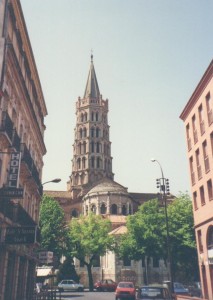
It’s a bank holiday weekend, so the Bibliothèque Municipale in Toulouse is closed. Throughout this year abroad, bank holidays keep popping up. Many I anticipate and plan for, but others come at me, unexpected. I take them in stride; they offer a good excuse to postpone work and relax. On this occasion, we opt for additional sightseeing in the South of France. We take in the nearby historic cities of Albi and Carcasonne, then head to Provence, where we spend several gloriously unhurried days in Nimes, Avignon and Arles. The gray chill of April is yielding to the sunny splendor of May, and the countryside has an air of lush enchantment.
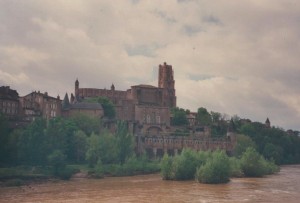
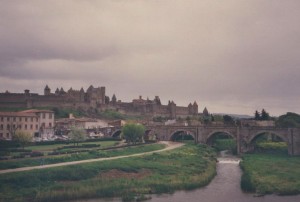
Atop the hill is the fortified medieval Cité of Carcasonne. Its striking resemblance to a fairy tale village is likely due in part to its comprehensive nineteenth-century restoration by Viollet-le-Duc. The newer part of town surrounds the walled center section.
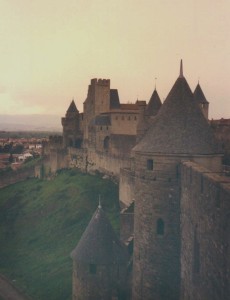
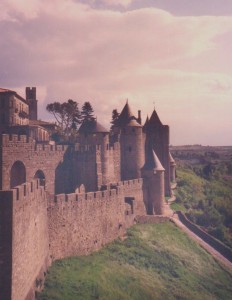
On our last night in Carcasonne, we seem to be floating in a slightly surreal multicultural soup. At a rustic traditional restaurant in the old town, we eat cassoulet, the area’s famous casserole of duck, goose, pork and white beans. During dessert, an Irish band plays Leonard Cohen songs, the lyrics translated into French.
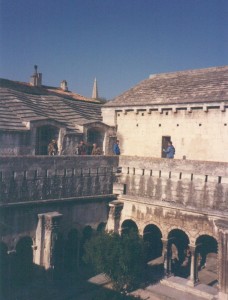
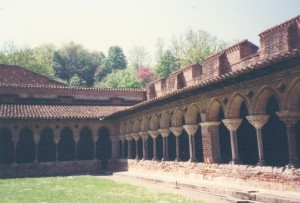
Once we return to Toulouse, my friend goes home to England, and I’m on my own. The library opens, and I spend a couple of days with my manuscript. One afternoon, I go to the nearby town of Moissac to see the medieval Abbey of Saint-Pierre. The church is adorned with a wealth of Romanesque sculpture, which I’ve studied since my very first art history course. The carving is dramatic, highly stylized and exuberant. What a thrill it is to be in its visionary presence.
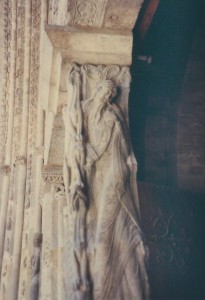
I return to Paris by train, stopping for one night in the picturesque town of Souillac on the Dordogne River. The scenery between Toulouse and Souillac is amazing. I’m more and more smitten with each village we pass. Look: there’s the medieval bridge of Cahors, as neat and tiny as a child’s toy. In the distance I spot the perfect hilltop village of Saint-Cirq-Lapopie. My dog Popi, six years gone now, has his own French town, I think. It’s appropriate; he had such class and style. I’m envisioning future trips to the lovely Dordogne Valley.
I can’t remember why I stopped in Souillac, but I’m glad I did. I find the nicely situated and aptly named Hotel Belle Vue. The day is warm and bright, and I wander the old, narrow streets with no particular goal or destination in mind, one of the great luxuries of leisurely travel. Before long, the buildings give way to flower-filled meadows. I stop to watch some ducks paddling in the river near an old mill. After a while, I follow a grassy pathway winding uphill. At the top of the hill, the path emerges from trees and foliage to reveal the village below, clustered around the domes of the Abbey Church of Sainte-Marie. The scene is quaint, timeless and peaceful. It could be an image from one of the illuminated manuscripts I’ve been studying. I couldn’t have dreamed up a more poetically satisfying finale for my solitary exploration. All these years later, I carry it with me, like a treasure.
